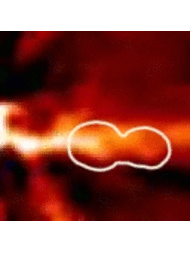SPHERE – GTO Science
In compensation for providing the instrument, the consortium received 260 nights of guaranteed time observations (GTO).
They were allocated primarily to the SHINE survey for expolanets (200 nights), a programme to search for and image circumstellar disks (20 nights), a programme to search for planets in reflected light with ZIMPOL (20 nights), and a mixture of "other science" programs (12 nights). The remainder has been allocated as seen fit, mostly to the disk programme.
The prime scientific goals of SPHERE that were originally defined have actually been achieved
- to better understand the mechanisms of formation and evolution of planetary systems. The fundamental observational parameter is the frequency of planets as a function of mass and separation.
- study the characteristics of young exoplanetary systems
- to study planet-disk interactions
- to characterize the properties of young planetary atmospheres
In addition to these exoplanetary topics, SPHERE provides outstanding contributions in the fields of brown dwarfs, stellar formation, discs and jets, small bodies of the solar system, and evolved stars.
Particular highlights
The full list of science papers produced with the help of SPHERE can be found via the ESO telescope bibliography tool. The current number stands at 141 refereed publications (May 2019).










